 Policy Brief + Recommendations
Policy Brief + Recommendations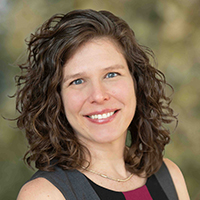
Teresa is Habitable’s Chief Research Officer, leading our research strategies.
Almost every day, news headlines warn us of the dangers of ‘forever chemicals’, known as PFAS, used in the manufacturing of consumer and industrial products. They’re being found in our water, air, fish, and soil across the U.S. and around the globe, and our body tissues, showing up in almost every person in the US. A report by Habitable (formerly Healthy Building Network) examines the presence of PFAS in residential and commercial paint products—and the urgent need to stop their use.
We recently spoke with Teresa McGrath, chief research officer, and the report’s lead author, to discuss the team’s research findings. She shares what industry professionals can do to avoid human exposure, and discusses why—and how—manufacturers can eliminate them from paint formulas altogether.
HABITABLE:
Before we jump into the details of this groundbreaking report, can you share a little bit about yourself and your expertise as it relates to chemical sciences and paint products?
TERESA MCGRATH:
My background is in chemistry and toxicology. My entire career I have focused on green chemistry: the idea of using chemistry to help meet sustainability goals. Before joining Habitable, I led the chemical management program for Sherwin-Williams, one of the largest paints and coatings companies in the world. In that role, I focused on hazard reduction and transparency, and helped business units in meeting sustainability goals. As chief research officer at Habitable, I lead a team of researchers on studies that seek to better understand hazardous chemicals that may be present in or used to make building materials, as well as putting forward recommendations and best practices to reduce or eliminate their impacts.
H:
Habitable’s most recent report delves into the presence of PFAS chemicals in paints. Officially named perfluoroalkyl and polyfluoroalkyl substances–PFAS–are commonly called ‘forever chemicals’. Can you tell us what forever chemicals are and why they’re so harmful?
TM:
PFAS refers to a class of chemicals with over 10,000 different structures. All PFAS are very persistent chemicals. The fluorine-carbon bond of these synthetic chemicals is very difficult to break and this means that they don’t break down on their own once they get into our bodies or into the environment. Given this persistence, they are often referred to in the media as ‘forever chemicals’. These chemicals can also be bioaccumulative, meaning they build up in our bodies, and can be toxic. We don’t yet know all of the potential harm because most of these chemicals have not been tested, however a host of negative health effects have been associated with PFAS including cancer, liver damage, decreased fertility, developmental delays in children, and disrupting the natural hormones in our bodies.
H:
Can you give us an idea of the scale of this problem and why is it so important that we phase PFAS chemicals out of paint products?
TM: Architectural paints coat the inside and outside our homes, schools, and workplaces, making PFAS in paints a potential exposure concern for everyone from those who manufacture and apply the paints to those who occupy painted spaces. They’re a health and environmental concern throughout their lifecycle, from cradle to grave. And while we already know some PFAS are linked to increased health risks, we may just be scratching the surface, as some experts have suggested, we may be underestimating the dangers of these widespread chemicals.
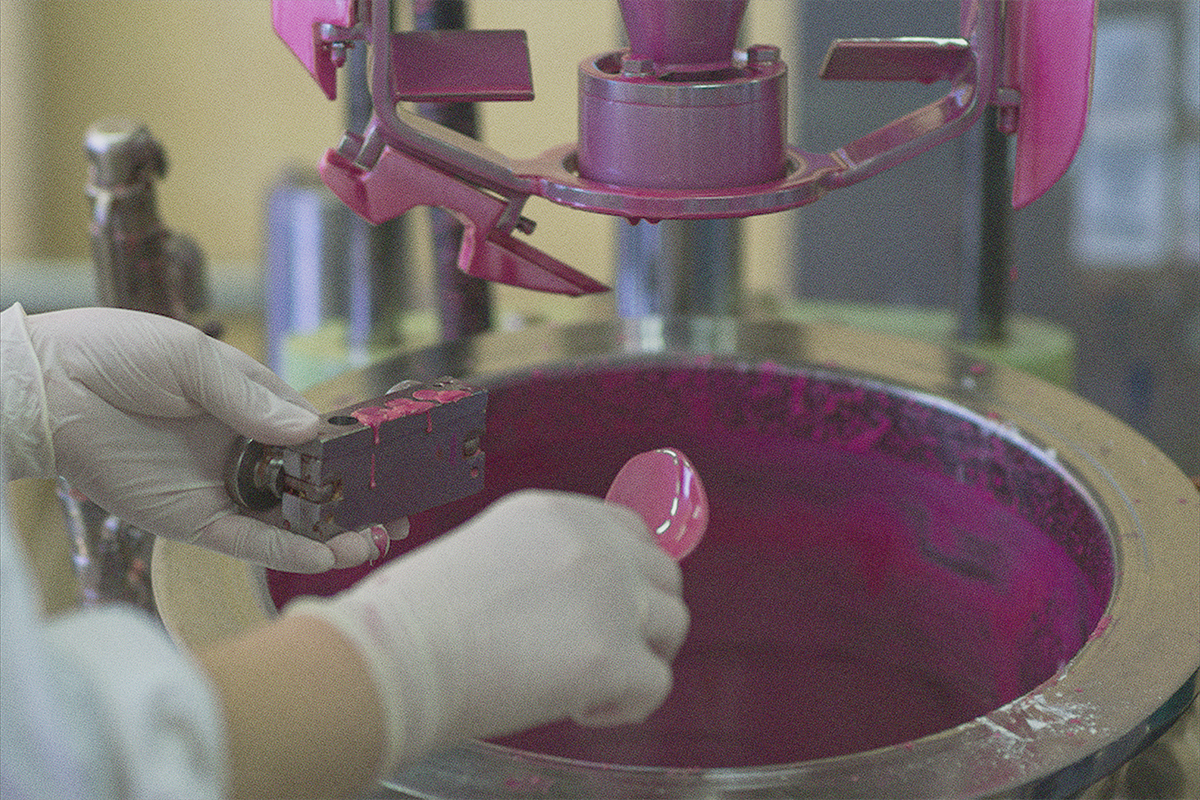
H:
As part of this study, Habitable tested numerous different paint products and brands for the presence of toxic forever chemicals. What were the team’s findings?
TM:
We tested 94 paints for total fluorine (TF), and a subset for extractable organic fluorine (EOF), indicators of PFAS.
We selected paint samples across most brands, price tiers, gloss, base, and colorants. Samples represented eight major paints and coatings manufacturers that together have over 65% of the paints and coatings market share in North America. We found that about 50% of the paints tested positive for these indicators of forever chemicals, the detailed list is included in our report. All tested brands had at least one product that tested positive for fluorine, and at least one product that tested negative for fluorine. And while the overall percentage of PFAS present in these products is generally small (less than 1%), there is no amount of PFAS in paint that can be considered acceptable because of their health implications.
We did reach out to paint manufacturers, but none could provide us with more comprehensive information on the definitive purpose and use of these chemicals in their products. The likely assumption is they’re using these forever chemicals as a surfactant, meaning they are acting as a stabilizer helping the paints to spread and coat more evenly.
H:
According to the report results, there are numerous paint products on the market today that don’t use these harmful additives. Are these chemicals even necessary and is removing PFAS chemicals from paint a relatively easy thing to do?
TM:
While surfactants are critical to a paint formulation, there are other PFAS-free surfactants that are used for the same purpose that are safer, objectively, from an environmental and human health perspective. Half of the paints we tested didn’t show evidence of PFAS, so we know that it’s possible to formulate paint products without it.
H:
What actions should the paint industry and their suppliers take in light of these findings?
TM:
Paint manufacturers need to phase-out all use of intentionally-added PFAS. When removing forever chemicals from formulations, manufacturers should make sure that PFAS are not replaced with other hazardous chemicals such as alkylphenol ethoxylates (APEs).
To avoid regrettable substitutions and facilitate informed material selection, all alternatives must have full chemical hazard assessments. If a paint company doesn’t know the full hazard profile of a chemical or surfactant, they should consult a toxicologist to evaluate that chemical. The ChemFORWARD platform offers tools and data to help companies find safer alternatives.
In addition, manufacturers should publicly disclose all ingredients in their paints, including PFAS use at any concentration. It should be standard practice for all paint manufacturers to tell the public what they’re putting in their products, along with the toxicity profile of every ingredient.
At a high level, industry players can support bans on PFAS and regulations that require more ingredient transparency in the paint sector..
H:
And lastly, how can you source PFAS-free paint products if you’re a consumer, building professional or specifier?
TM:
All this information might feel a little overwhelming, but we have developed two tools to make it much easier. And the good news is, all of the brands we tested had at least one option that tested negative for fluorine. Specifiers can refer to Habitable’s InformedTM paint guidance resource to select safer paints, as well as our downloadable form that can be used to ask manufacturers for a paint that meets the transparency and material health attributes specified by Habitable. By following these tips you can source paint that is free of forever chemicals, and also meets other environmental best practices such as low VOC content and emissions.
Buyers can also advocate for paint companies to do better. Ask paint manufacturers to provide public disclosure of all intentionally added ingredients, using the Health Product Declaration (HPD) or Declare label.

This Women’s History Month, we’re celebrating an incredible leader in the green chemistry and healthy materials space: our very own Teresa McGrath! Teresa is Habitable’s Chief Research Officer, leading our research strategies.
Prior to working at Habitable, Teresa led the Chemical Management Program for Sherwin-Williams, the largest paints and coatings company in the world, where she focused on hazards reduction and transparency and assisted business units in meeting sustainability and green chemistry goals. She also spent nine years as the Senior Managing Toxicologist at NSF International’s Green Chemistry Programs, and two years at the Environmental Protection Agency in the Design for the Environment (DfE) Branch of the Office of Pollution Prevention and Toxics (OPPT).
We caught up with Teresa to learn why she’s a champion for safer chemicals and healthier products and to get her perspective on the industry today.
HABITABLE:
What got you interested in working in sustainable products and clean chemistry?
TERESA MCGRATH:
It all starts with my family. Specifically my father – who would never identify as an environmentalist – but through his actions taught me to care for those who are most vulnerable and to take care of our planet. For example, more than once I witnessed my dad giving CPR to an injured animal that one of our dogs had mangled. In grade school I disgusted my friends by pulling carrots out of a peanut butter and jelly coated baggie my father had reused (this was before reusable bags were a thing!).
In college I did a research project on how to remove pesticides from drinking water using a biocatalytic filter method. It took me until the end of the project to ask myself “Wait, why is this pollution in our drinking water to begin with? Why are we using chemistry in such an inefficient, clumsy way?” After a little digging I stumbled on the Twelve Principles of Green Chemistry, authored by Dr. Paul Anastas and Dr. John Warner. These principles are centered around using chemistry to prevent pollution rather than create it, to make efficient use of resources down to every atom, to avoid waste. This was an inspiring moment for me.

I decided to pursue a graduate degree in chemistry that focused on Green Chemistry. At the time the only graduate program focused entirely on “Clean Chemical Technology” was in the U.K. at University of York. Off to England I went, and I have worked in the field of Green Chemistry for my entire career.
H:
What has surprised you the most about working in this field?
TM:
I have worked in government, NGOs, and industry. I think what is surprising is how much these stakeholders have in common and how most people want the same things when it comes to human health and the environment. Most people want (to make, use, or buy) safer products that work well and they can afford. It is this alignment that we can all use to make progress.
The most exciting projects in my work experience were those that harnessed input from different stakeholders with different perspectives. For example, in 2017 Valspar invited NGOs and academics who fought against the use of the endocrine-disrupting chemical bisphenol A (BPA) to help them design and test alternatives to BPA for use in food packaging.
We can all learn from each other, and these moments of collaboration are critical to enable market changes toward products that are safer for human health and the environment.
H:
Who has inspired you along your journey?
TM:
In addition to Dr. Anastas and Dr. Warner, I am grateful to Dr. Lauren Heine, who I met at a Gordon Green Chemistry conference when I was in graduate school and has been a friend and mentor to me ever since. Dr. Heine is a leader in the field of green chemistry, green engineering, and sustainable business practices.
I first met Lauren when she was the Director of Applied Science at Green Blue Institute, where she developed the CleanGredients database in partnership with the U.S. Environmental Protection Agency (EPA) to help cleaning product manufacturers find safer alternatives. At Clean Production Action, she co-authored and led the development of the GreenScreen for Safer Chemicals, a method for comparative chemical hazard assessment. She has also worked as Director of Science and Data Integrity at ChemFORWARD, where she co-created a harmonized chemical hazard assessment methodology that will not helps people avoid chemicals of concern, but also identify safer alternatives. She serves on various advisory boards and committees all over the world to share with the rest of the world a bit of the brilliance whenever she can.
Lauren taught me that collaboration is one of the most important tools to inspire change. She has an unique ability to build connections and relationships with every project she is involved with. I aspire to approach my work with this same focus.
I also credit Lauren with helping me land my very first job out of graduate school at the EPA despite the fact that I handed her a printed resume on scented paper (long story!).
H:
What are you excited about?
TM:
When I talk to project teams about how they find and select healthier products for new construction or retrofits, I often hear that they rely on disclosures like Health Product Declarations (HPDs) or Declare labels, or ecolabels such as Greenseal or Cradle to Cradle certifications, or most often they rely on manufacturer claims about the product.
I’m feeling optimistic that there has been more traction with manufacturers using these great transparency programs. There are a limited number of products on the market today that carry disclosures, and even fewer that have ecolabels. Real estate teams often feel stuck when the product they want to select is not yet disclosed. Also, because a product carries a disclosure or an ecolabel does not mean it is the best choice to avoid hazards for that product category.
I believe that there is a lot of value in disclosures and product certifications and that they play a critical role in our ecosystem. And, I believe the most powerful way to achieve safer products is to start BEFORE relying on those product disclosure tools. Project teams can take advantage of product type guidance to select products that are typically safer than others – all before ever selecting from an individual manufacturer.
Habitable’s InformedTM product guidance is informed by our 20+ years of building materials research. Guidance for individual product categories are generated by analyzing everything we know about a product category, including the way the products are made, the hazards associated with the product content, and end of life options for different product types. The reason I am so excited about this resource is that it summarizes a LOT of technical information into a simple, easy to use format that can be applied easily to both benchmark current practices and select typically safer products for projects, and even help document the powerful impacts of choosing safer materials on a project.
H:
What advice do you have for up-and-coming leaders in this space?
TM:
Don’t be afraid to reach out directly to professionals to learn more about their jobs. Ask what experience they are looking for in candidates, what their day to day looks like, and even directly ask about open positions or internship opportunities. Once you are in a role, actively look for opportunities to meet people within and outside of your organization. By expanding your network you learn different perspectives and build your capacity to collaborate on your next project. I can say from experience that you can make an impact from many different vantage points. We need young energetic leaders in NGOs, government, industry, and academia who are passionate about making the world a better place!
Healthy Building Network (HBN) is excited to welcome Monica Nakielski as our new Board Chair!

“I was excited to join an organization having the impact that HBN does. Our influence and impact spans across industries and the globe with the science and resources we create,” Monica said. “I was interested in networking with other leaders in this space while contributing to the conversation and bringing a healthcare perspective to the table.”
A longtime champion of healthy buildings and spaces, Monica is the former Vice President of Sustainability at Advocate Aurora Health. She has over 15 years of experience as a sustainability practitioner and consultant to Fortune 500 organizations, governments, institutions, and nonprofits, with a focus on health care, hospitals, and health systems.
Monica has long had a passion for healthy materials. Traveling to her mother’s home country of Ecuador years ago, she was deeply impacted by the visible effects of industrial processes and pollution. It was clear that in those communities – like many in the US and around the world – it was the already marginalized communities who were bearing the brunt of the impact of our choices.
Monica first connected with HBN in 2011 at a BizNGO gathering, where she began to learn about the deeper connections between health and the built environment and the way business and product decisions can deeply impact both. She quickly became an advocate for healthier materials and joined the HBN board in 2019.
A commitment to create healthier spaces for patients, staff, and communities has shaped Monica’s career for more than a decade. Before joining Advocate Aurora Health, she served as the head of sustainability at Blue Cross Blue Shield of Massachusetts (BCBSMA), where she and her team worked to influence health insurers to be leaders of environmental sustainability. She also led and managed sustainability at MassGeneralBrigham (formerly Partners HealthCare) across 16 facilities and 18 million square feet.

A Both-And Approach
As a leader in sustainable healthcare, Monica has been a vocal advocate for integrated approaches to creating safer and healthier spaces. She pushes back against the false dichotomy many practitioners feel of having to choose between climate or chemicals – i.e., focusing on energy efficiency or low-carbon choices versus eliminating toxic chemicals from products and the supply chain. She believes that both approaches can and must be aligned and integrated to create truly healthy spaces for all.
One of her proudest successes was impacting the amended fire code while working for a healthcare system in Boston in 2013. She had the opportunity to advocate with the Boston City Council to ensure that the new fire code met both public safety and public health needs. They were successful in removing toxic flame retardants from the requirements, which directly impacted the administrative headquarters they were building at the time. For that project, Monica’s team was successful in ensuring that more than 70% of the materials used in the building interiors avoided the worst chemicals of concern.
Monica is committed to blazing a trail and bringing others along for the journey. “We are able to drive this cultural shift and change, all the way down to selecting healthier, safer products, while we’re assuring the same, if not better health outcomes,” she said. “It comes down to connecting with our colleagues and educating them – finding the stories and the information that will inspire them to act.”
Monica believes that HBN is well-positioned to lead this work and create a healthier, more just world. “It’s up to us to lead, to share, to continue to collaborate, network, and leverage the science, tools, and resources that HBN publishes.”
A Bright Future for HBN
Monica is incredibly excited for the growth and expansion that HBN is poised to take on in the coming years, and we are fortunate to have her as a leading voice guiding the way.
“What I find most exciting is that these discussions are bubbling up everywhere. With new ESG reporting standards and rules, people are being held accountable. I love the idea of continuing to raise awareness and drive perception, tying it back to the science. For people who have worked in the space of sustainability, we have waited for a really long time for people to connect the dots and to get as excited about this work as we are.”
We are grateful for Monica’s leadership and commitment to helping us achieve our vision that all people and the planet thrive in a world free of toxic chemicals.
“I want to leave the world a better world for my kids, and their kids, and the generations that follow,” she said. “I think we all do.”

Simona Fischer, MSR Design
As registered architect, sustainable design professional, and associate with MSR Design, Simona Fischer has spent much of her career thus far developing and testing strategies for integrating sustainable design into the workflow of architectural practice. Her experience includes project management, Living Building Challenge documentation, and firmwide sustainable design implementation.
Simona is a dynamic community of practitioners who help co-create solutions to accelerate the adoption of healthier building materials in affordable housing. She has presented at national conferences, lectures regularly at the University of Minnesota, and currently co-chairs the AIA Minnesota Committee on the Environment (COTE).
Simona was instrumental in the Living Building Challenge Petal Certification of MSR Design’s new downtown Minneapolis headquarters, which achieved the materials, beauty, and equity petals. The project incorporated more than 114 Red List Free materials and achieved a 28 percent reduction of its embodied carbon footprint by using salvaged materials. She also led the development of guidelines around transparency, sustainability, and health for the firm’s materials library, including training materials for staff and external sales reps.
We sat down with Simona to learn why materials have been a focus of her career and to get her perspective on the green building industry today.
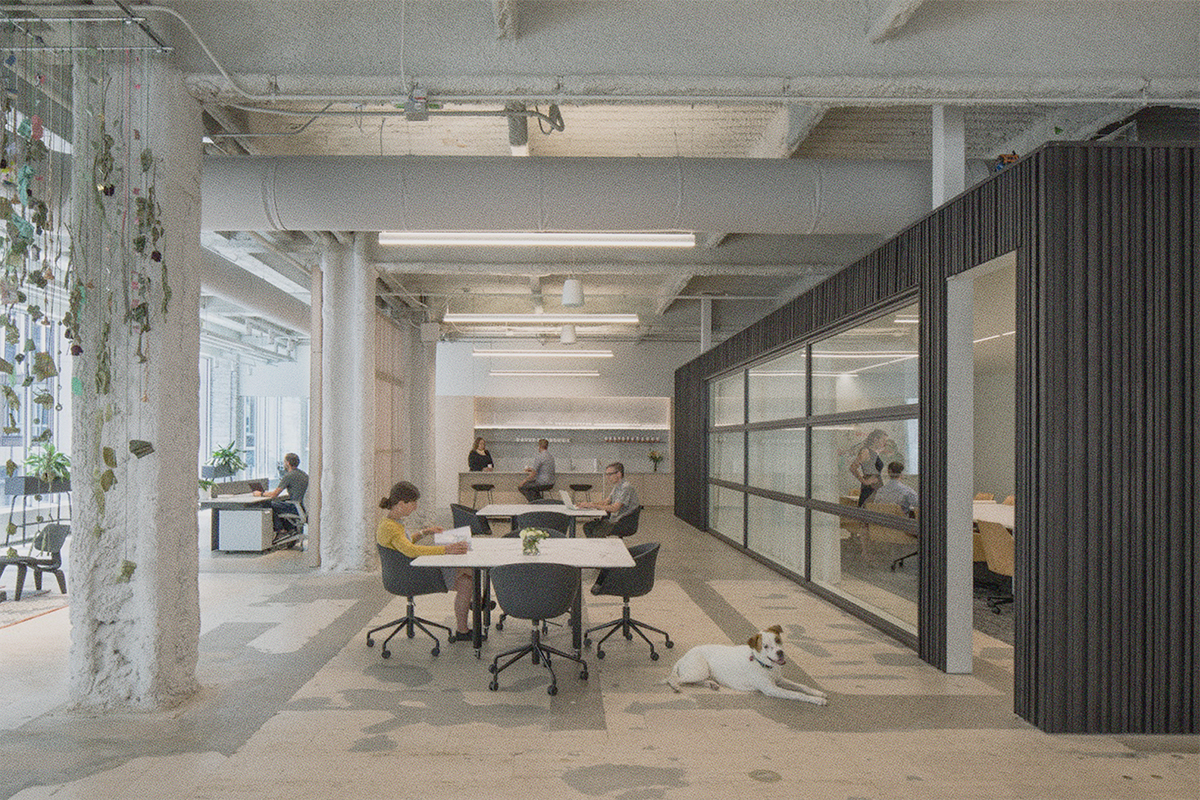
What sparked your passion about healthier materials? Was there an “aha” moment or a time that something just clicked?
I was that kid who won a prize for designing the elementary school recycling banner, so I guess I’ve cared about materials for a long time. But my interest in building materials was piqued in architecture school, when we were challenged to create a new ecolabel. Faced with inventing a way to compare one material to another in terms of sustainability, I realized how mind-blowingly complex of a task that was. How do you make the criteria objective? How do you compare products across categories? How do you measure health – is it just by the list of ingredients, or do you include research on health outcomes factoring exposure and risk (and if so, what research even exists)? How do you stack human health and other metrics against each other and choose which factor outweighs the other? How do you account for performance and durability? The questions were endless and led to more questions, which I found complex and intriguing. In other topic areas like water and energy in buildings, the goal seemed straightforward (at least on the surface). Use less energy, and make it cleaner. Use less water, and make it cleaner. But with materials, the number of variables were infinite. We had to think about balancing not just toxicity to people and embodied carbon, but also harvesting of raw materials, ethical manufacturing, and what to do with all that stuff at the end of its useful life.
I ended up writing my MS thesis on methods for assessing sustainability at the level of the manufacturer, as opposed to focusing solely on individual products which change so frequently. I was really just trying to find a system map at a higher level, and make the big, shifting world of materials more manageable in my head. I still use some of what I learned during that project as indicators of whether a building product manufacturer is serious about human health and sustainability, or just greenwashing. But sometimes they are greenwashing because they don’t know any better, and they are on their way to improving. So you can’t just write off smaller companies who don’t yet have all the documentation. It’s a learning process for them as well.
At MSR Design, the conversation about healthy materials had already started when I joined to work on The Rose, a Living Building-inspired affordable housing development in Minneapolis. My colleagues Rhys MacPherson, Paul Mellblom, and Rachelle Schoessler-Lynn were leading the conversation about why we should, and how we could, avoid vinyl and other chemicals on The Rose and on other projects across the firm. Over the next couple years we held a number of all-staff discussions and training sessions on healthy materials. Many staff members, from seasoned designers to interns, became interested in the question of how we could do better while still delivering a beautiful aesthetic and the best functionality for our clients. By the time we were ready to start designing our new studio, healthy materials as a concept had had enough time to become embedded in the culture
Tell us about your project to build the new MSR studio. Why was it important to prioritize healthy materials for this project? What went into your process?
When we knew we were moving, we held an all-staff discussion to debate frameworks for certification. We considered LEED, WELL, Fitwell, and Living Building Challenge Petal Certification. In the end, LBC won, because the Materials Petal was so ambitious, prioritizing not only human health through the use of Red List Free products, but also environmental health and other butterfly-effect impacts of resource harvesting and global warming potential and waste. At the same time, the LBC path included an emphasis on equity, as well as using the project as a tool to educate and inspire others. We found the holistic approach inspiring, and appreciated the challenge (most days).
It was important to prioritize healthy materials because we knew our staff cared about living out our values around healthy indoor environments. I think the team will agree that meeting the Red List requirement was difficult. It took time to develop a workflow for gathering the documentation. But it also gave us the opportunity to rethink the way we approach materials from the start of projects. Instead of trying to weed out all the “bad” chemistry, we found it was actually easier to start from scratch and build up a list of materials we knew were likely to comply with the requirement. It ended up being simpler, mostly natural materials, which we used as the palette for our space.
How do you consider low embodied carbon versus health in product selection?
Non-toxic materials and low embodied carbon are two lenses on a singular problem, which is planetary health. Human health is a subcategory of planetary health, since we’re part of the planet and made of its stuff. When indoor and outdoor environments, and plant and animal and human bodies, are polluted by toxic substances, both from human-made toxins and an overabundance of greenhouse gasses, the global ecosystem suffers and humans suffer within it. We are nature. What’s interesting is, younger, upcoming professionals and design students seem to understand this intuitively. They don’t even need to be told that human and global environmental health go hand in hand. So I think as an industry, we just need to accept the interplay of embodied carbon and human health as a foregone conclusion and get straight to the nitty-gritty of what materials we use and how those materials are grown, produced, manufactured and delivered.
That said, we also need to get serious about the data used to back up carbon and health claims. We need transparent, standardized reporting from manufacturers, including making sure the scope of every life cycle assessment (LCA) takes all the impact categories of the AIA Materials Pledge into account. I think petroleum-based building materials are going to be a battleground for a while to come. The low purchase price and saturation in the market make plastics seem like an easy choice for all kinds of different finishes and performance layers in buildings. It is possible to make them somewhat healthier for end-users by being careful to avoid certain additives. But that leaves a massive loophole; the impacts of production and waste on planetary health. I think there’s an opportunity for data to drive a new understanding here. If we can start seeing standardized collection and data crunching of environmental product declaration (EPD) data from different product sectors, we might be able to correlate carbon from building products more directly to regional health impacts of the production of those chemistries. This would help close loopholes that allow the incredible health impact of high global warming potential (GWP) emissions to stay hidden in the shadows
How have you used your knowledge to help move your clients toward healthier materials? What has been most successful?
I think some of my most successful work has been in addressing priorities and processes in our workflow. I can’t count the number of times I’ve heard people say they just wish there was a single, simple database of all the great products. There are ever-improving databases out there, but people always want something else that is missing, so the problem hasn’t been solved. I think the missing piece is a deeper understanding of the principles of product categories, such as knowing what different types–not brands, but general types–of insulation or countertop materials are made of, and where they come from. This level of knowledge, over time, becomes a kind of intuition one uses to filter the world of products even as new things constantly appear in your inbox or your lunch and learns. When you understand the principles, and don’t just rely on a database to provide a solution, it also gets easier to speak knowledgeably and make solid recommendations to clients.
On project work, I have the best luck when I’m upfront about why we need to consider material health alongside cost. You have to tailor your message to the audience, for example, some clients are most receptive to the idea of improving their impact on the world, whereas for others, the message that hits home is one of directly affecting their health or the health of people they care about
How has Habitable’s InformedTM building product research been helpful or influential?
I love InformedTMand recommend it to designers all the time, and clients too. The information is organized in terms of product categories as opposed to brand names or labels, so it aligns with the level of learning that I think is most beneficial to becoming smarter in practice. We used the sample specs to rewrite our paint specifications in 2021. We’ve also heard great lectures from Habitable research team members over the years that have left an impact on our staff.
What advice do you have for other AEC leaders? Are there processes or approaches you would recommend? Where would you recommend a newcomer to healthier materials start?
For designers, I recommend signing the AIA Materials Pledge and studying the categories. The Pledge is a great framework – if you address each of the Pledge categories in some way, you know you’re hitting the right bases. If you can, allot some time to staff education and discussion. I recommend the Living Building Challenge Materials Petal as a particularly inspiring framework for education and good discussion, because it is based on absolute goals, instead of relative improvement. The COTE Super Spreadsheet (downloadable on the AIA website) is a good starting point for addressing materials issues in an applied manner on projects.
At MSR Design, our internal education efforts led to the development of our Material Library Entry Criteria. If others want to design similar criteria for their libraries, they are welcome to copy ours outright or modify as needed: www.msrdesign.com/generative-impacts.
The more we as designers align in our message to manufacturers about health and carbon, the easier it becomes for them to stay in business while giving us what we want
What are you most excited about right now?
I’m excited about natural and biobased materials. On the high-tech side, there is so much opportunity for new materials to be developed, especially bio-based polymers. On the other hand, there is a new straw bale project that is being built in Minneapolis. It’s low tech in comparison to the latest research in biomaterials, and yet it combines healthy, natural materials seamlessly with low carbon construction. The team is using Passive House building science principles to build a durable system, which they will test with sensors in the walls over the next few years. I really resonate with the idea that we can build a sustainable future with natural materials in both high- and low-tech ways
What do you want other people to know?
We, as an industry, are practicing architecture and construction in an era where buildings are made of hybrid material systems so complex, we hardly know what’s in them or why they work. I think we architects can perhaps find evidence of the Vitruvian virtues of utilitas (utility) and venustas (beauty) in the work we produce, but somewhere as a profession, I think we have let go of the firmitas (stability). Not in the sense of solid structure, but in the sense of owning materiality and material knowledge as a critical aspect of an architect’s role. We have become accustomed to accepting a level of vagueness about assemblies and their tons of little components, and leaving the details to the product manufacturer. I think understanding materials deeply is about reclaiming this knowledge, and a piece of architecture we have lost
Thank you to Simona and MSR design for being leaders in healthier materials! To learn more about the MSR headquarters project, check out this case study. You can also learn more about MSR’s commitment to sustainable design and download their Sustainable Materials Action Packet on their website. Follow this link to learn more about InformedTM, product guidance which Simona mentions influencing her practice.
“When I came here, my unit was on the brink of falling apart. We had so many problems; the carpets were incredibly old, and turning the AC on was like having a helicopter inside the house.”
These are the words of Vanessa del Campo. She was born and raised in Mexico and like many other people, she moved to the United States searching for safer and better living conditions. She now lives in Minnesota and rents a small unit in a multifamily apartment building located in one of the areas designated by the Minnesota Pollution Control Agency (MPCA) as of Environmental Justice concern. Her experience as a tenant is filled with stories of unjust evictions, health concerns, and constant battles with unlawful landlords that neglected her right to even the most basic human living conditions.
Fortunately for Vanessa and other neighbors in her building, she received support from a community-based organization, Renters United for Justice (abbreviated IX from its name in Spanish), that helped them organize and mobilize to reclaim desperately needed services to maintain their health and wellbeing. What began as an organized effort to request new windows for a handful of apartment units turned into an exhausting but successful journey to purchase the run-down complex of apartment buildings from their landlord and secure a loan to renovate all the apartments.

It’s easy to get lost in Vanessa’s excitement as she talks about this newfound opportunity. She mentioned that her baby had a tough time learning to crawl because it was too dangerous to place her on the ground due to rats and cockroaches often running past her. At the same time, it is also easy to forget that in addition to being a mother and having a demanding job, she now has to fulfill the role of a building co-owner as a leading member of the newly formed residents’ collective (A Sky Without Limits).
With so much work going into buying and renovating the apartment complex, the residents had little time to think about the chemical safety of their chosen building materials. That’s where HBN came in. In 2021 the MPCA awarded IX and Healthy Building Network a grant to work together to reduce toxic chemical exposures among children, pregnant individuals, employees, and communities who are disproportionately impacted by harmful chemicals used in common products.
One example of toxic chemicals in homes are phthalates, or orthophthalates, which are chemicals that help make plastics flexible. They can also impact the proper development of children. These chemicals are banned in children’s toys in the U.S., and The Minnesota Department of Health in partnership with MPCA named phthalates as “Priority Chemicals” as part of the 2017 Toxic-Free Kids Act. While many manufacturers have phased out hazardous phthalate plasticizers, existing vinyl flooring, especially those installed 2015 and earlier, likely contain these potential developmental toxicants. This translates to dozens of pounds of these hazardous chemicals in the floor of a single apartment unit. As these chemicals are released from products, they deposit in dust, which can be inhaled or ingested by residents – particularly young children who are crawling on floors and often place their hands in their mouths.
“Honestly, we never stopped to think about how harmful [building] materials could be.” Vanessa said. “It was just regrettable to see how we were living. We understand that the new materials that are going into our buildings today may not be the healthiest. Today, we realize it is important to think about how we want to live in our homes, to imagine the quality of life we want in our buildings, in our community.”
Over the coming year, HBN will work with IX and the residents’ collective to evaluate the materials used in their ongoing renovation process and provide recommendations to improve material selection. We will also develop resources tailored to residents to enhance their understanding of how the surrounding environment influences their health. To extend the impact of this work, we will create and share a set of best practices that property managers and tenant organizations can use to advocate for healthier materials in the communities they live in and properties they manage.
“Our collaboration with HBN is timely. By working together with the property managers, we can raise their awareness about how their work impacts our health and help change how they select materials,” Vanessa said.
At Healthy Building Network, we are grateful for the opportunity to work with IX and local leaders like Vanessa through the MPCA grant that makes this collaboration possible. We call on public agencies, foundations, and private investors to fund initiatives that seek to dismantle health inequities through direct investment in the communities disproportionately impacted by environmental injustice, especially related to toxic chemical exposures. We look forward to sharing with you the lessons, stories, and resources that come out of this collaboration.

To learn more about selecting healthier products, visit our Informed™ website, which includes a wide range of resources and tools to help you find healthier material options.
Un inquilino clama por viviendas más seguras y saludables
“Cuando llegué aquí, mi apartamento estaba a punto de desmoronarse. Tuvimos muchos problemas; las alfombras eran increíblemente viejas y encender el aire acondicionado era como tener un helicóptero dentro de la casa”. Estas son las palabras de Vanessa del Campo.
Vanessa nació y creció en México, y como muchas otras personas, se mudó a los Estados Unidos en busca de mejores condiciones de vida. Ahora vive en Minnesota y alquila un apartamento en un edificio multifamiliar ubicado en una de las áreas designadas por la Agencia de Control de Contaminación de Minnesota (MPCA) como de interés de Justicia Ambiental. Su experiencia como inquilina está marcada con historias de desalojos injustos, preocupaciones de salud, y batallas constantes con propietarios que negaron su derecho a incluso las condiciones más básicas de vida.
Afortunadamente para Vanessa y otros vecinos en su edificio, ella recibió el apoyo de Inquilinos Unidos por Justicia (IX), una organización comunitaria que les ayudó a organizarse y movilizarse para recuperar los servicios que desesperadamente necesitaban para mantener su salud y bienestar. Lo que comenzó como un esfuerzo organizado para solicitar nuevas ventanas para un pequeño número de apartamentos, se convirtió en una larga pero exitosa tarea para comprar el destartalado complejo de apartamentos y asegurar un préstamo para renovar todas sus unidades.
“Pasamos por muchos litigios con el propietario porque no estaba haciendo las reparaciones que necesitábamos y no quería vendernos los edificios. El año pasado, cuando llegó la pandemia, finalmente obtuvimos la oportunidad de comprar el edificio. Fue un momento feliz y difícil porque estábamos aterrorizados de enfermarnos [con el virus], pero logramos organizarnos y apoyarnos unos a otros. Hoy estamos trabajando con una nueva empresa de administración de propiedades y el banco para instalar alfombras, pisos, techos, ventanas, hornos, refrigeradores y baños nuevos. Estamos haciendo una profunda renovación para llevar todos los apartamentos a un estado que es mucho, mucho mejor que el que teníamos”.
Es fácil dejarse llevar por la emoción de Vanessa mientras habla de esta nueva oportunidad. Ella mencionó que su bebé tuvo dificultades para aprender a gatear porque era demasiado peligroso colocarle en el suelo debido a las ratas y cucarachas que a menudo rondaban la casa. Al mismo tiempo, también es fácil olvidar que además de ser madre y tener un trabajo exigente, ahora tiene que cumplir el rol de copropietaria de un edificio como miembro principal de un recién formado colectivo de residentes (Un Cielo Sin Límites).
Con tanto trabajo invertido en la compra y renovación del complejo de apartamentos, los residentes tuvieron poco tiempo para pensar en la seguridad química de los materiales de construcción que fueron utilizados en sus apartamentos. Ahí es donde entra Healthy Building Network (HBN, o, La Red de Edificios Saludables). A principios de este año, MPCA otorgó a IX y HBN una subvención para reducir la exposición a sustancias químicas tóxicas entre los niños, las personas embarazadas, los empleados y las comunidades que se ven afectadas de manera desproporcionada por sustancias químicas nocivas utilizadas en productos comunes.
Un ejemplo de sustancias químicas tóxicas en los hogares son los ftalatos u ortoftalatos, que son sustancias químicas utilizadas para ayudar a dar flexibilizar a los plásticos. Estas sustancias también pueden afectar el desarrollo adecuado de los niños. Estos productos químicos están prohibidos en los juguetes de los niños en los EE. UU. El Departamento de Salud de Minnesota, en asociación con MPCA, nombró a los ftalatos como “productos químicos prioritarios” como parte de la Ley de Niños Libres de Tóxicos de 2017. Si bien muchos fabricantes han eliminado los plastificantes de ftalato, estos químicos están presentes en los pisos de vinilo existentes, especialmente los instalados antes de 2016. Esto se traduce en docenas de libras de estos químicos peligrosos en el piso de una sola unidad de apartamento. A medida que estos productos químicos se liberan de los productos, se depositan en el polvo que los residentes pueden inhalar o ingerir, afectando especialmente a los niños pequeños que gatean por el suelo y a menudo se llevan las manos a la boca.
“Honestamente, nunca nos detuvimos a pensar en lo dañino que podrían ser los materiales [de construcción]”. Dijo Vanessa. “Fue lamentable ver cómo vivíamos. Entendemos que los materiales que se utilizan en nuestros edificios hoy en día pueden no ser los más saludables. Hoy nos damos cuenta de que es importante pensar en cómo queremos vivir en nuestros hogares, imaginar la calidad de vida que queremos en nuestros edificios, en nuestra comunidad”.
Durante el próximo año, HBN trabajará con IX y el colectivo de residentes para evaluar los materiales utilizados en su proceso de renovación y brindar recomendaciones para mejorar la selección de materiales. También desarrollaremos recursos para ayudar a los residentes a entender cómo el entorno circundante influye en su salud. Para extender el impacto de este trabajo, crearemos y compartiremos un conjunto de mejores prácticas para que los administradores de propiedades y las organizaciones de inquilinos puedan abogar por utilizar materiales más saludables en las comunidades en las que viven y en las propiedades que administran.
“Nuestra colaboración con HBN es oportuna. Al trabajar junto con los administradores de propiedades, podemos aumentar su conciencia sobre cómo su trabajo impacta nuestra salud y ayudar a cambiar la forma en que seleccionan los materiales”, dijo Vanessa.
En Healthy Building Network, estamos agradecidos por la oportunidad de trabajar con IX y líderes locales como Vanessa a través de la subvención otorgada por MPCA que hace posible esta colaboración. Hacemos un llamado a las agencias públicas, fundaciones e inversionistas privados para que financien iniciativas que busquen desmantelar las inequidades en salud a través de inversión en las comunidades impactadas de manera desproporcionada por la injusticia ambiental, especialmente relacionada con la exposición a sustancias químicas tóxicas. Esperamos pronto poder compartir con ustedes las lecciones, historias y recursos que surgen de esta colaboración.
Dr. Ami Zota, Associate Professor at the Department of Environmental & Occupational Health at the George Washington University (GWU) Milken Institute School of Public Health, created a platform to amplify underrepresented voices in science and environmental health. She launched her vision, Agents of Change, in 2019 with its first cohort of changemakers.
The high-achieving crew included Dr. MyDzung Chu, a first-generation Vietnamese-American, environmental epidemiologist, new mother, and postdoctoral scientist at the GWU Milken Institute School of Public Health. MyDzung is invested in understanding social determinants of health and environmental exposures within the home, workplace, and neighborhood contexts. Her current research investigates the impact of federal housing assistance on residential environmental exposures for low-income communities.
In her Agents of Change blog, Why Housing Security is Key to Environmental Justice, MyDzung examines the intersection of housing, racism, and environmental justice, and its effects on population health. She challenges us: “It is time for the environmental health community to step up and be at the forefront of addressing housing insecurity.”

MyDzung is practicing what she preaches – and blazing a trail while doing it. In her local community, MyDzung organizes with residents and non-profit organizations for affordable housing, equitable development, and anti-displacement policies. Her dissertation research examined socio-contextual drivers of disparities in indoor and ambient air pollution and poor housing quality for low-income, immigrant, and Black and Brown households. In a study published in Environmental Research, MyDzung and colleagues found that renters in multifamily housing were exposed to higher levels of fine particulate matter indoors that homeowner households, due to a combination of building factors and source activities that may be modifiable, such as building density, air exchange, cooking, and smoking.
MyDzung has a PhD in Population Health Sciences from Harvard T.H. Chan School of Public Health, a MSPH in Environmental-Occupational Health and Epidemiology from Emory University, and a BA in Neuroscience from Smith College.
To keep up to date with MyDzung’s research and impacts, you can follow her on Twitter or LinkedIn. And, click this link to learn more about her colleagues at Agents of Change. Thanks, MyDzung, for your leadership and courage to advance real change.
When celebrated Victorian painter Edward Burne-Jones learned that a favorite pigment—it was called Mummy Brown—was in fact manufactured from the desecrated Egyptian dead, he banished it from his palette and bore his remaining tubes to a solemn burial in his English garden.[1] Once you know better, you have to do better.
Transparency in the supply chain can reveal inconvenient truths about favored products. A fascinating new article about the plywood supply chain brings into view new incentives to stop using fly ash in building products.
In What You Don’t See, Brent Sturlaugson, a practicing architect and associate professor at the University of Kentucky attempts a full accounting of the environmental, social, financial, and political impacts he attributes to the supply chain for Georgia Pacific (GP) plywood. He opens his ledger at the world’s largest open pit coal mine, Peabody Energy’s North Antelope Rochelle Mine, located in the heart of Wyoming’s Thunder Basin National Grasslands. From there the environmental and health costs add up, many of them allocated to the utility that powers GP’s Madison, Georgia plant. The Robert W. Scherer Plant in Monroe County, Georgia, has been calculated to be the largest, dirtiest coal fired power plant in the United States.[2]
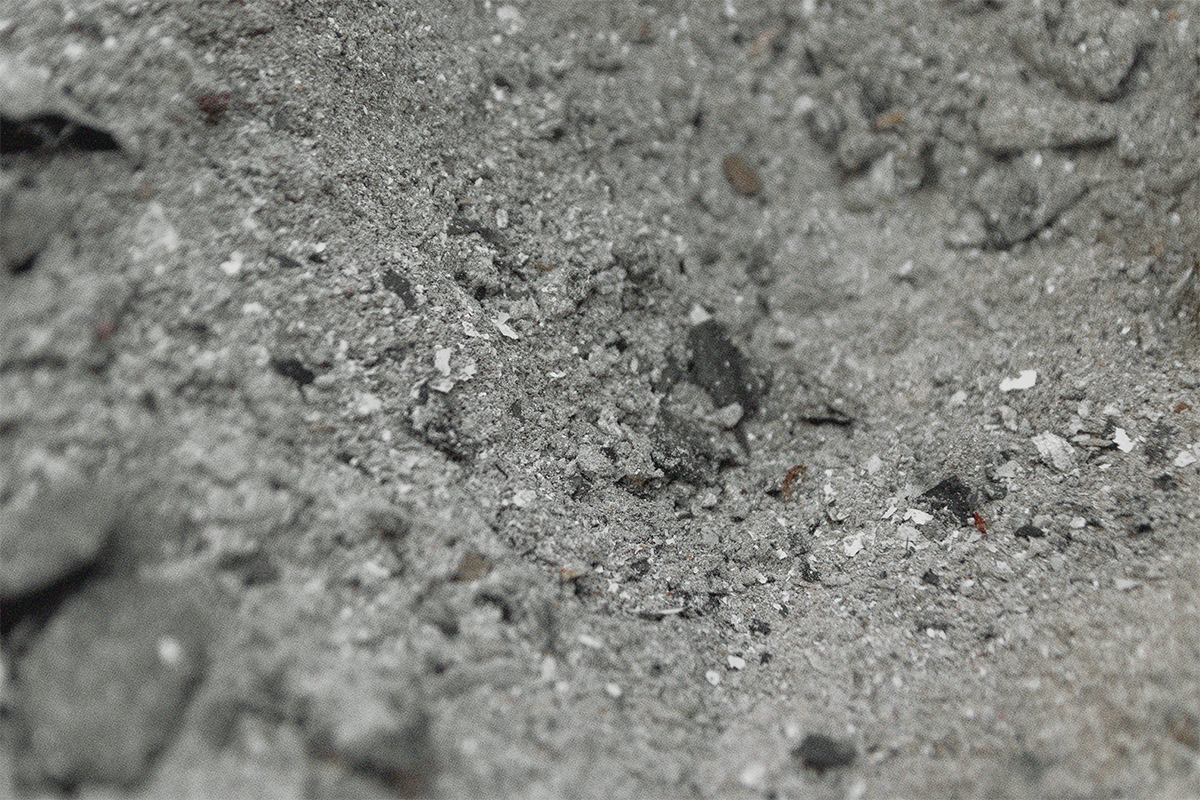
This caught the attention of the Healthy Building Network (HBN) Research Team, who previously identified this power plant as a huge mercury polluter. It is also the leading supplier of fly ash to U.S. carpet companies that use the ash as filler—replacing limestone in carpet tiles—in order to qualify for recycled content credits in LEED, the Living Building Challenge, and various government procurement standards. What we had not realized was that the Scherer plant relied upon a single source of coal, the North Antelope Rochelle Mine. HBN and others[3] have long recommended against the use of fly ash in various building products because of the heavy metal content of the ash and the cost incentives fly ash “recycling” provide to continue burning coal – absent reuse, the fly ash must be expensively managed as a hazardous waste. What You Don’t See compels us to consider the ash as processed coal, the original raw material ingredient. In this case, coal mined from the seam of a single, particularly gnarly open pit mine.
Located near Gillette, WY, the mine occupies territory whose history is steeped in the genocide of Indigenous Peoples who negotiated treaty rights to the region in the mid-1800’s. By the end of the century they lost their livelihood to the extermination of the American Bison, and then their land to well-documented, systemic treaty violations. Environmentalists and ranchers alike view the mine as a disaster for the local and global environment. It is a financial disaster for the American taxpayer, according to the U.S. General Accounting Office which cites the mine as an example of corrupt Bureau of Land Management practices that include no bid contracts, financial terms that deprive the U.S. of fair market value, and a brazen lack of transparency. All in violation of federal laws and regulations.
Squandered water and subsidized carbon emissions are only the beginning of the staggering sustainability losses from this coal, according to Sturlaugson’s detailed accounting, which also includes: “dark money” political contributions from the Koch brothers, the use of bankruptcy laws to renege on union pension obligations, and significant releases of toxic chemicals that can cause cancer, respiratory disease, and reproductive and neurological impacts.
Like the rich umber of Mummy Brown pigment, recycled coal ash in building products has a superficial appeal, until you learn the truth. What You Don’t See opens our eyes even wider to the reasons why the use of coal ash—processed coal—is unacceptable in green buildings and building products. Burying these products in our gardens or landfills won’t do. But we can and must root them out of our green rating system and recycling incentives.
SOURCES
- From the article Blue As Can Be, by Simon Schama, a fascinating history of prized (frequently toxic) artistic pigments. Schama, Simon. “Blue as Can Be.” The New Yorker, September 3, 2018.
- Schneider, Jordan, Travis Madsen, and Julian Boggs. “America’s Dirtiest Power Plants: Their Oversized Contribution to Global Warming and What We Can Do About It.” Environment America Research & Policy Center, September 2013. https://environmentamericacenter.org/sites/environment/files/reports/Dirty%20Power%20Plants.pdf.
- BuildingGreen and Perkins+Will are among those that have recommended against the use of coal fly ash in certain building products. Wilson, Alex. “OP-ED: EBN’s Position on Fly Ash.” Environmental Building News, August 30, 2010. https://www.buildinggreen.com/op-ed/ebns-position-fly-ash.; Glazer, Breeze, Craig Graber, Carolyn Roose, Peter Syrett, and Chris Youssef. “Fly Ash in Concrete.” Perkins+Will, November 2011. http://assets.ctfassets.net/t0qcl9kymnlu/1Tx57nRsWYYMEC824CkOaI/38239c5e0fb2044af10bc2b1fac38cf8/FlyAsh_WhitePaper.pdf.
- Vallette, Jim, Rebecca Stamm, and Tom Lent. “Eliminating Toxics in Carpet: Lessons for the Future of Recycling.” Healthy Building Network, October 2017. https://habitablefuture.org/wp-content/uploads/2024/03/81-eliminating-toxics-in-carpet-lessons-for-the-future-of-recycling.pdf. (see p. 21)
- Walsh, Bill. “Home Depot Raises The Bar On Hazard Avoidance – New Chemical Strategy Is An Important Step Towards Healthier Product Options.” Healthy Building Network Blog, October 25, 2017. https://habitablefuture.org/resources/home-depot-raises-the-bar-on-hazard-avoidance/.
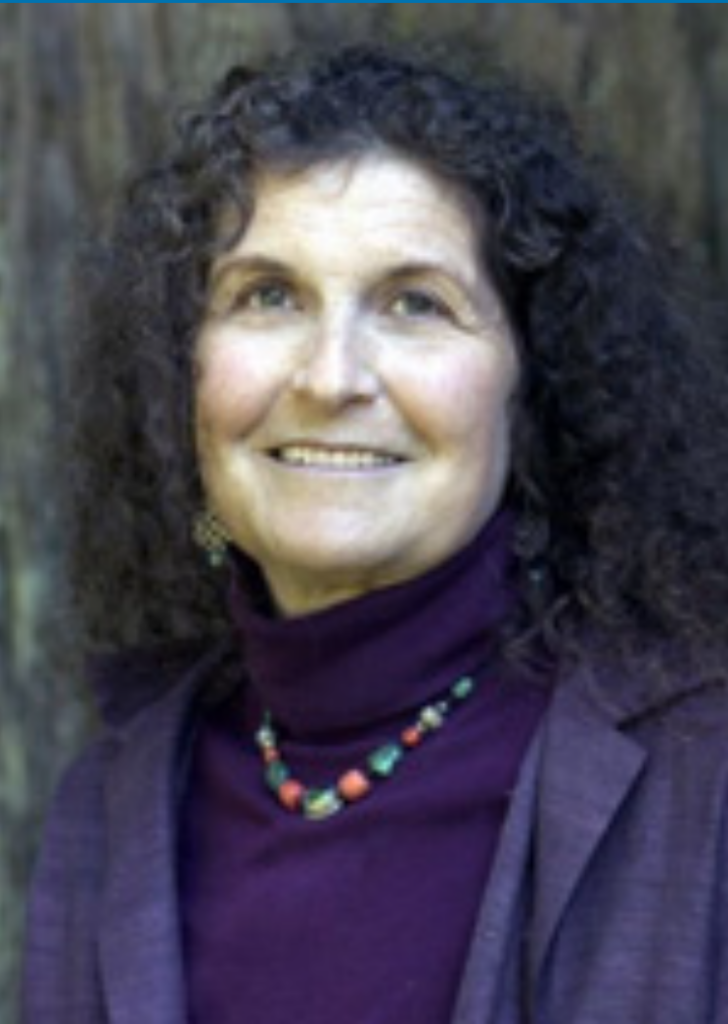
Arlene Blum is a biophysical chemist, author and mountaineer.
She is the founder and executive director of the Green Science Policy Institute which works with scientists, government, industry, and non-profits to facilitate more informed decision-making about flame retardants and other chemicals used in consumer and building products.
Healthy Building Network founder Director Bill Walsh caught up with Elaine, recording the following conversation:
Bill Walsh:
How did you get started working on flame retardants?
Arlene Blum:
Thirty years ago, as a researcher at the University of California, Berkeley, I published a paper in Science magazine showing that “Tris” flame retardants in children’s sleepwear caused mutations, were possible cancer hazards, and migrated from pajamas into children. The flame retardants were removed from children’s sleepwear in 1977, but chlorinated tris is now back in use in foam in furniture and other products.
BW:
Why are you so concerned about flame retardants in building materials?
AB:
If a building contains halogenated flame retardants in the insulation, they can filter into the building throughout its life and also form toxic dioxins if the building burns.
I know it’s a real dilemma for people when they learn that plastic insulation materials, such as polystyrene, polyisocyanurate, and polyurethane, that can help reduce climate change, often contain flame retardants which can cause serious health and environmental harm. But the good news is that this is a problem that can be solved.
Once green building professionals understand the issue, they can move to safer substitutes and strategies that don’t have potential adverse health impacts. In fact of the various groups with which I’ve worked on reducing toxics in products, the green building community has been the most responsive. So I am very happy to have the opportunity to share the message about moving away from the use of halogenated flame retardants at Greenbuild.
The new LEED Pilot Credit on Chemical Avoidance for not using phthalates and halogenated flame retardants inside buildings should accelerate our progress towards healthier buildings.
BW:
You mentioned that this is also a chemical contamination problem that could have negative impacts on our health and well-being at a global level? How?
AB:
Many halogenated flame retardant chemicals are persistent and bioaccumulate especially in humans and animals high on the food chain. It is almost impossible to clean them up once they are out in the world. For example, PCBs, chlorinated chemicals that were also used as flame retardants, were banned in 1977, but very high concentrations can still be found in wildlife and some human populations today. Studies show that human breast milk contains flame retardants, and toddlers have three to four times higher body levels than their mothers.
When tested in animals, many halogenated flame retardants have been found to cause health problems like cancer, reduced fertility and IQ, thyroid disorders, and developmental impairment. Many halogenated flame retardants are also endocrine disrupting chemicals that can harm us at very low concentrations.
BW:
How do you weigh the known benefits today against long term unproven risks?
AB:
In furniture there is no proven benefit. It makes more sense to reduce the sources of ignition with fire-safe cigarettes and candles than to put potentially toxic chemicals in all the possibly flammable materials in our homes. Today the risk of home fires is diminishing due to a 50% decrease in cigarette consumption since 1980, enforcement of improved building, fire, and electrical codes, increased use of sprinklers and smoke detectors. These strategies provide measurable improvements in fire safety without toxicity.
Smoke and toxic gases kill people in fires, more than flames. Research on furniture fires show that while halogenated flame retardants can reduce the time for ignition by seconds, they greatly increase the carbon monoxide, smoke, and soot. The chemicals also release dioxin and related compounds when burned at relatively low temperatures. So the benefits of retarding the fire with toxic chemicals is greatly reduced by the increased fire toxicity and dioxins at the fire scene.
Given the lack of proven benefit in some cases, the risk-benefit calculation on chemical flame retardants can be tenuous even before you start to consider the widespread exposure to these chemicals on a daily basis.
Better methods of reducing fire risks include careful material selection and alternative fire suppression strategies that can be designed into products and buildings.
BW:
How can people take this knowledge and translate it into action?
AB:
When people know about the hazards of the flame retardants that are commonly used in many plastic foam insulations, furnishings and other building materials, they can choose alternative products or push for less toxic flame retardants. When green building professionals make these choices, this will increase the availability and decrease the cost of the alternatives.

Moving the market demand for flame retardants in the huge building sector can also help with policy changes. We have been providing scientific support to change a California furniture flammability standard to provide similar or greater fire safety without flame retardant chemicals.
We also need national chemical policy reform. Because of weaknesses in the Toxic Substances Control Act, which has not been updated since 1976, chemicals are innocent until proven guilty and that proof is almost impossible to obtain. Even asbestos could not be banned. And manufacturers are not required to perform any toxicity tests before putting chemicals into products! Green buildings need to be both energy-efficient and healthy. Reducing the use of halogenated flame retardants will help achieve this and help create a healthier world for us all.

 Pollution
Pollution Health
Health Equity
Equity